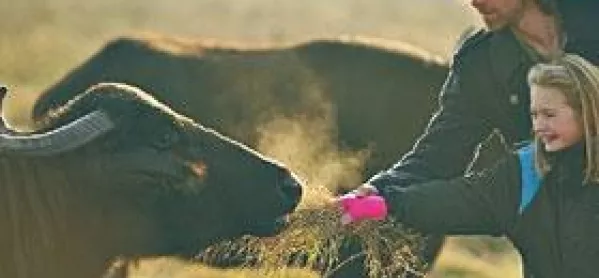Animals in schools usually extend no further than a pet goldfish, hamster or, in some lucky circumstances, a resident dog.
But West Rise Junior School in Eastbourne has now added five Asian water buffalos, which graze on the adjacent 60 acres of marshland leased from the local council.
The small herd of buffalo was bought by the school as part of its Bronze Age project, which is helping pupils to learn more about that period.
The school is located on the second largest Bronze Age site in Europe and hundreds of ancient but perfectly preserved artefacts have been unearthed from the school site, with many ending up in the British Museum.
Headteacher Mike Fairclough said that with the help of local businesses, the five buffalo were bought for pound;750 from a Scotsman who kept the animals as pets on the South Downs.
“He was no longer able to keep them as he had a road accident, so we bought them from him,” Mr Fairclough said. “We chose them because they are the only animal suited to graze on wetlands - their hooves are wider so they don’t sink.
“Plus, they most closely resemble the now-extinct Bronze Age cattle that used to roam northern Europe, called Aurochs. The children can feed the animals and have a more hands-on learning experience.”
The school’s Bronze Age project has so impressed that the conservation group Natural England has donated pound;150,000 to the school to help them with their plans.
So far, the pupils have learned to light fires, skin and cook rabbits as well as pluck pigeons and row Bronze Age boats - coracles - across a lake on the site. The pupils are even fishing with rods they made themselves.
The buffalo join a variety of other animals such as chickens and goats, which are kept in the school field.
The cash from Natural England will come over a 10-year period and help with the latest phase of the school’s project, a Bronze Age village.
“The first tranche of money will be used to help with land management, encouraging greater bio-diversity on the marsh as well as helping with opening the site to the wider community,” Mr Fairclough said.
“The rest of the money will be used to create the village with raised platforms and walkways. It all helps with the educational experience of the children. It brings the surroundings closer and that seems to fit with the current government agenda.”




